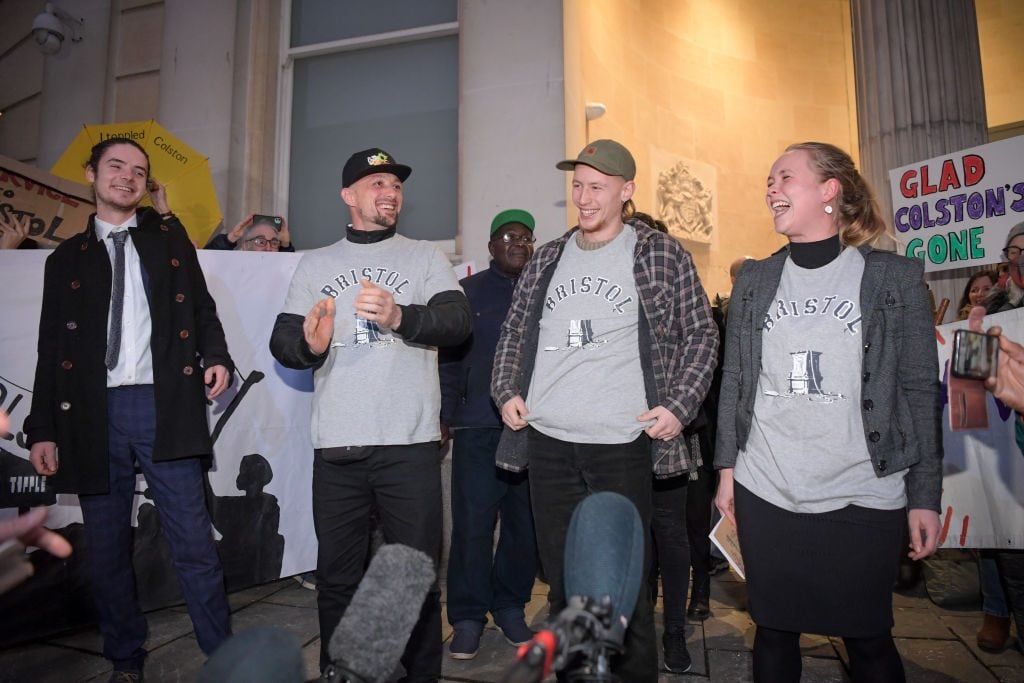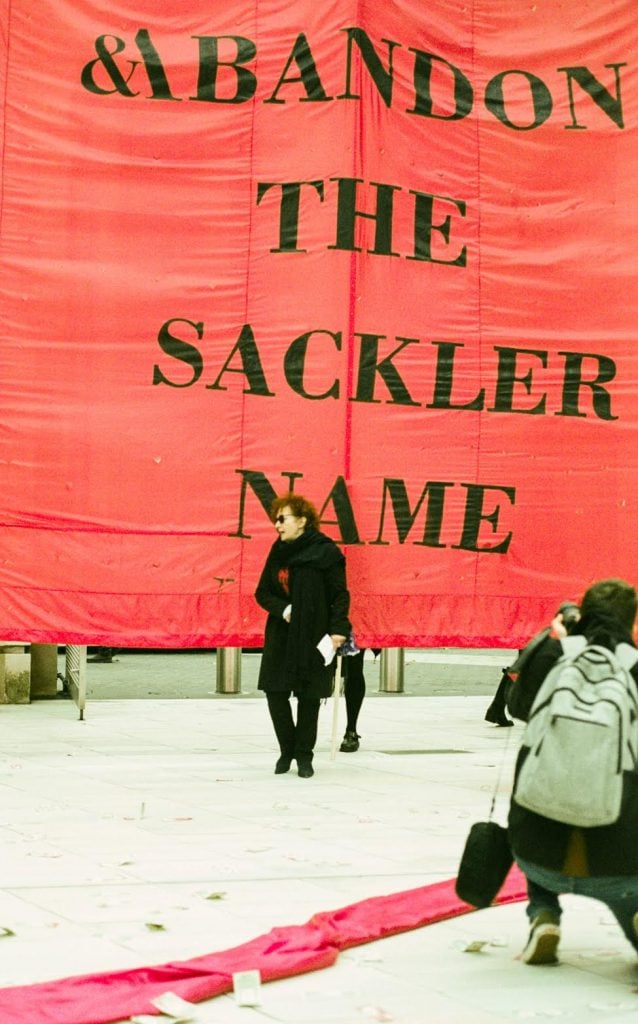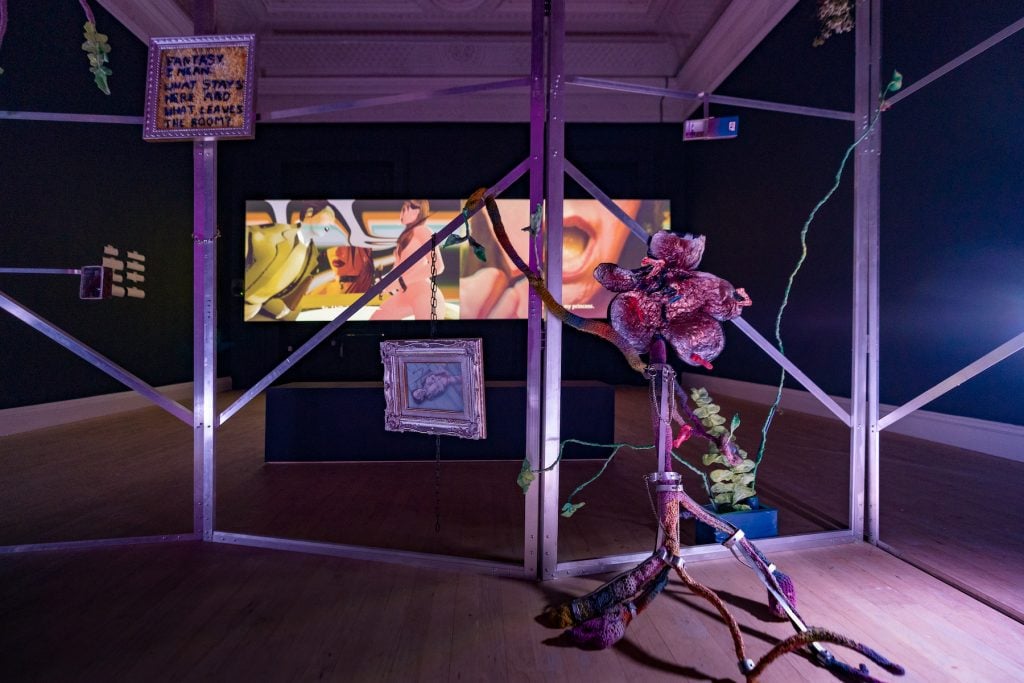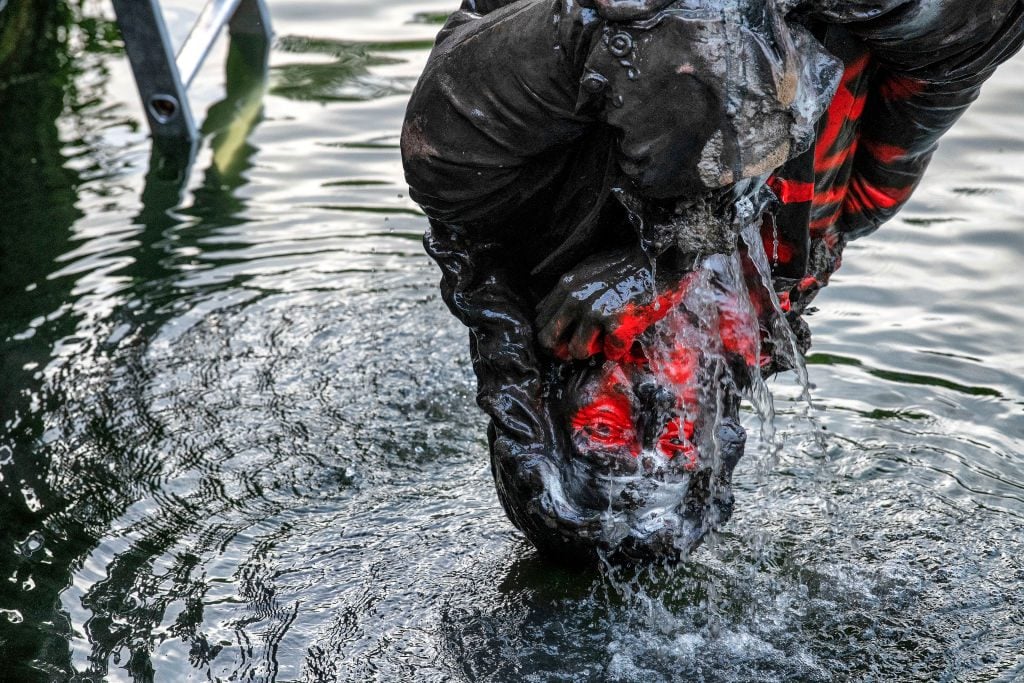As an actual war continues to take a devastating human toll in Europe, the United Kingdom’s cultural institutions are facing their own insidious “culture war” with different stakes—ones that could have a devastating impact on artistic expression and museum autonomy.
This January, four protesters in Bristol were acquitted for their role in toppling a controversial statue of the British slaver and philanthropist Edward Colston during a Black Lives Matter protest in the city in June 2020. Powerful images from the event drew global attention to the question of how we should deal with historic tributes in our public spaces when their present day context has drastically changed. Dubbed “the statue debate” it has divided the public with, on one side, those who believe the figures celebrated in our built environment should reflect contemporary values, and, on the other, a more conservative “anti-woke” faction that fears a slippery slope that will lead to the erasure of history.

The “Colston Four”—Sage Willoughby, Jake Skuse, Milo Ponsford and Rhian Graham—celebrate after receiving a not guilty verdict at Bristol Crown Court, on January 5, 2022 in Bristol, England. (Photo by Finnbarr Webster/Getty Images)
So far, this debate has largely unfolded in the media, but the trial of the Colston Four is not the only example of it entering a court room. A controversial law—dubbed the Police, Crime, Sentencing, and Courts Bill—is currently passing through parliament, which would increase sentences for monument damage and peaceful protest. On February 28, conservatives M.P.s voted in large numbers to reinstate clauses rejected by the House of Lords earlier this year, leaving the specter of harsher sentences hanging over all current cases linked to protest.
For the art world, a lot hangs in the balance.
“In the last few years, protest has brought about a lot of positive change in the culture sector. Mass movements such as #metoo and Black Lives Matter have helped make the art world less white and male. Campaigners such as Nan Goldin have helped make museum funding less unethical,” Farah Nayeri, journalist and author of Takedown: Art and Power in the Digital Age, told Artnet News. “If protest was to be curtailed in a Western democracy, the art and museum world would fall out of touch with society, and ultimately, become less representative—and less democratic.”

Nan Goldin protesting with Sackler P.A.I.N. at the Victoria and Albert Museum in London in 2019. Photo by Lottie Maher, courtesy of Sackler P.A.I.N.
Government Interference
Threatening culture workers’ right to protest is not the only way these culture wars are impacting the museum world.
The conservative media has found a soft target in museums, and right wing pundits have levied criticism at public art commissioners, artists and curators for pursuing a “woke” agenda. Their ire has often been projected on projects aiming to increase access and transparency, and shed light on untold histories that were in the works long before “wokeism” became a buzzword. These projects include the National Gallery and UCL’s investigation of their collections’ and patrons’ links to slavery, and another similar project at the National Trust that resulted in a firestorm that ended with the resignation of its chairman. In an op-ed for the New Statesman, historian David Olusoga called out the soft targeting of historians in this context: “Historians should repeatedly point out that the “rewriting of history” is not some act of professional misconduct but literally the job of professional historians,” he wrote.
While in power, the current Conservative Party government has appointed several major party donors to boards of publicly-funded museums in an effort to redress what it has interpreted as an overwhelmingly liberal politic within the arts. Six donors who have paid in a total of £3 million ($4.7 million) to party coffers have been appointed to the boards of the National Gallery, the British Museum, the National Portrait Gallery and the Tate since Boris Johnson became Prime Minister in 2019.
It was in the aftermath of the Black Lives Matter protests in 2020, that the then-culture secretary Oliver Dowden sent a letter to 26 institutions stating that publicly-funded museums “should not be taking actions motivated by activism or politics.” The Museums Association released a statement in response, expressing its concern at the perceived interference in museum work.
“Museums must be able to carry out research and inquiry into all areas of history—it is not for ministers to dictate what constitutes a legitimate subject for investigation or what the outcome of that research might be,” it said, adding that the government should consult widely with the sector before producing any guidelines on “contested heritage.”

Installation view of Yarli Allison and Letizia Miro, This Is Not For Clients (2021. “Decriminalised Futures” ICA. Photo ©Anne Tetzlaff.
Cognitive Dissonance
Sources at a high level within museum administration, who declined to be quoted in fear of repercussions for themselves and their institutions, told Artnet News they were “taken aback” by the apparent cognitive dissonance between directives from the department of culture, media, and sport to increase diversity and improve access both in their programming and infrastructure, and the blowback received from members of the government when they complied. The apparent catch-22 has created a culture of fear that they believe is threatening the cultural landscape in the U.K.
“We are being told that what we need to do in order to receive money is to diversify at every level,” Amal Khalaf, civic curator at the Serpentine and director of programs at Cubitt Artists confirmed to Artnet News. “It goes beyond equality policy stuff to actually change governance models, [and] create more caring ways of working internally… The kind of bricks and mortar day-to-day stuff related to staying open demands that you have diversity on a policy level as well.”
Publicly-funded museums in the U.K. are often at least partially accessible free of charge, and are generally seen as a safe space for generating ideas and discussing differences. Many contemporary artists see discussions about the big issues of race, the climate crisis, social inequality, and health as an extension of their practice and museums reflect this by making themselves as hospitable as possible. Currently on view in London is an exhibition highlighting the rights of sex workers at the ICA, upcoming at the Serpentine is a show which looks at among social care for adults and children, health rights and body capital; and the V&A will look at the history of fashion in Africa.
Khalaf described museums as a space to “listen differently, and to just be allowed to hear things differently.” She added: “Whether you’re just walking in the Turbine Hall, and you suddenly feel like you’re allowed to just be a bit freer with your day, or with your hour that you’re there… I think the experience everybody has when they go into an art space is this difference.”
This tension in government that is impacting museums, arts workers, and academics is not taking place in a vacuum. There is currently a swathe of restrictive laws going through the U.K. Parliament including the Nationality and Borders Bill, and the Elections Bill in addition to the PCSC Bill. This host of new bills and amendments to existing laws affecting citizenship rights, access to information, voting, protest, judicial review and human rights legislation is rarely out of the press, adding to the atmosphere of fear and mistrust.
Through it is doubtful that this atmosphere will immediately result in censorship, only time will tell if the threat of withdrawn funding will result in more cautious commissioning, and whether that will have a ripple effect on the kind of work artists decide to make.
As many of the world’s other museums look to a decidedly “woke,” de-colonized, future, we are left wondering if the end-game of the U.K.’s culture wars will not only be traumatized cultural professionals, but could also leave the U.K.’s world-leading museums at an international disadvantage.









